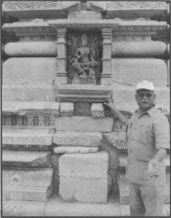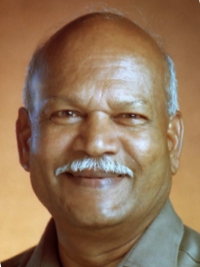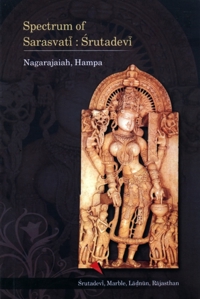
[1] Khajurāho, 12th cent. C.E.
Śri Sarasvatyai Namaḥ
Scholars have noticed the three distinct traditions in the story of Rāmāyaṇa and (Mahā) Bhārata, namely the Buddhist, Jaina and Hindu. Analogous to this, in the corpus of literature and sculptures on Sarasvatī also exists differences between the above three traditions. This monograph deals mainly with the Jaina tradition where the deity is more popular as Śrutadevatā.
Abundant material on the subject comes from Jaina sources, which has not been ransacked completely. This monograph, an attempt in that direction, will add a new dimension to the study made so far by scholars like U.P. Shah and Catherine Ludvik.
The nature and purport of this monograph is to delineate the genesis and status of Śrutadevī in the backdrop of Sarasvatī. In dealing with the transformation of the goddess from Sarasvatī into Śrutadevī, I have extended Ludvik's studies by adding additional information and focused on the origin, manifestation and status of Śrutadevī in the milieu of Jaina cosmos. Prof. Catherine Ludvik has confined to the extant of pre-eighth century material, and I have dwelt on some medieval sculptures also.
I deem it as my duty to place on record my sense of ananta kṛtajnatā, 'gratitude unbound', to the E.J. Brill, Leiden-Boston, Netherlands, for the excellent work the great Institution is doing in promoting Indological studies world-wide through its invaluable publications. I am one of the Thousands of its beneficiaries spread all over the world. I recall my delight, in particular, of reading Prof. Dr. Klaus Bruhn's The Jina-Images of Deogarh, also published by the prestigious E.J. Brill (1969). Once again I was inspired to author this monograph by reading Dr. Cathrine Ludvik's book - Sarasvatī: Riverine Goddess of Knowledge, published by the Brill's Indological Library, Volume 27 (2007), Edited by Prof. Dr. Johannes Bronkhorst, in co-operation with Professors Richard Gombrich, Oskar von Hinuber, Katsumi Mimaki and Arvind Sharma.
His Holiness Karmayogi Svasti Srī Carukīrti Bhaṭṭāraka Paṭṭācārya Svāmiji, revered pontiff of Sravanabeļagoļa Monastery, is an author-orator, saint-scholar, and an adept in Prakrit-Sanskrit canons. The learned pontiff is also a liberal patron of art, architecure, culture and literature. Realising the importance of this monograph, revered Bhaṭṭārakji readily agreed to publish and bless with his benediction. With pleasure, I place on record my sense of gratitude and regard to Paramapūjya Srī Carukīrti Bhaṭṭārakji.
Dr. Paul Dundas, Professor of Sanskrit at the school of Asian Studies, University of Edinburgh (U.K.), the celebrated author of The Jains (Routledge, 2nd edition, 2002), is a leading Jainologist in the West, particularly in U.K. Since he had read most of my books in English, I requested him to write a Foreword. It is my pleasure and proud privilege to express my gratitude to Prof. Paul Dundas for his generous and perceptive Foreword.
In addition to Dr. Catherine Ludvik, I owe my gratitude to Professor Diwakar Acharya, Kyoto (Japan), for drawing my attention to Ludvik's book. He has helped me by scanning the entire book and e-mailing it in instalments, and to Professor Klaus Bruhn who so generously sent me a complimentary copy of Ludvik's book from Berlin. Similarly I am grateful to Dr. P.S. Jain, Director NIPSAR.
I have reproduced eight photographs from Catherine Ludvik's book, and in each one of them I have given the photocredit by acknowledging the courtesy of E.J. Brill.
N.B.: It is believed that the seasonal Ghaggar River in modern Haryāṇa State, which flows from Nahan to Sirsa, represents the ancient Sarasvatī River. Detailed studies of the status of Sarasvatī Nadi of northern Haryāṇa have been carried out using multi-date and multi-resolution satellite image, GIS techniques and ground data. Recent researches to decipher the dwindling state of Sarasvatī Nadi, to locate ĀdiBadri as the place of origin, and its possible linkage with the Vedic Sarasvatī River are in progress. Suggestions are offered to safeguard and revive Sarasvatī River as a National Heritage [vide: Bhadra, Bidyut K, Gupta A.K., Sharma JR.: Sarassvati Nadi in Haryana, Journal of Geological Society of India, 2009].
Nāgarājaiah, Hampa
 Prof. Dr. Nagarajaiah Hampana
Prof. Dr. Nagarajaiah Hampana
